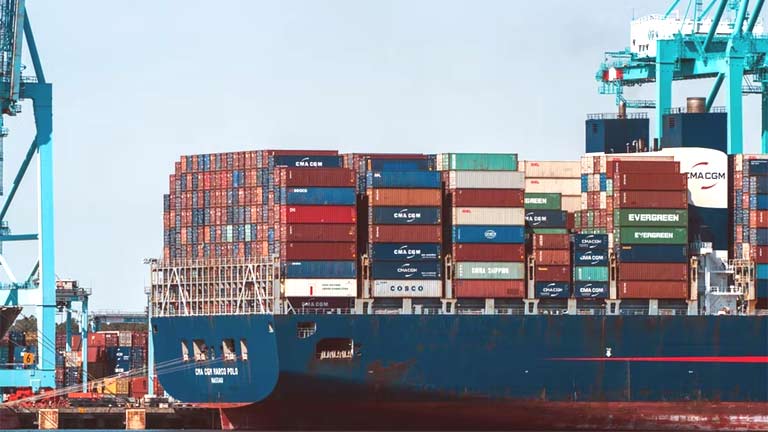
High-density polyethene (HDPE) is a rigid material that is frequently employed to make pipes and fittings used in a wide range of plumbing applications, such as supplying potable water or draining wastewater.
To help you figure out which types of HDPE pipes and fittings are right for your project, keep reading to learn everything you need to know about the material, sizes, fittings, and suppliers.
1. Material
Over the past few years, HDPE has quickly become the preferred choice of material for pipes and fittings. This material produces high-quality and durable products that can be employed in a wide range of industries and projects such as manufacturing, petrochemical plants, and residential buildings.
In addition to being tough and durable, HDPE is also incredibly flexible and lightweight, which makes it easier to transport and more straightforward to install. Together these characteristics reduce the time and labour required to install HDPE pipes, while also posing less of a risk to those who are handling them.
Not only is HDPE leak and rust-proof, but it is also corrosion, chemical, and UV resistant and does not act as a breeding ground for bacteria and fungi. Therefore, for all of these reasons, this material is ideal for pipes and fittings.
For environmental reasons, HDPE is also the preferred choice as the material is biodegradable and easily recyclable, unlike most other pipe materials. Generally, HDPE pipes are made from 25% to 100% recycled materials. Throughout the production process of HDPE, manufacturers only have to use a small amount of energy when compared to what is required to produce other pipe materials (such as steel).
While there are plenty of instances in which HDPE pipes and fittings are utilised in large industrial projects, they are also ideal for smaller residential uses and landscape draining. Therefore, you can find the best HDPE pipe manufacturers producing HDPE pipes and fittings in a wide range of specifications and dimensions.
2. Sizes
Just as important as the material of the pipe you purchase is the size of it, as every project requires something different. While you can find HDPE pipes in a wide array of sizes, most projects require pipes that are 1/2 inch and above.
That being said, determining what size of pipes your project needs can be confusing because pipe size doesn’t refer to the outer diameter (OD) of the pipe, but instead refers to the nominal diameter.
Therefore, to accurately measure what size of pipe you need, you have to convert the actual diameter into the nominal diameter.
For male threads, this means measuring the OD of your pipe or pipe fitting. You can do this by wrapping a string around it, indicating where the string overlaps and then using a measuring tape to determine the length between the tip of the string and the mark you made (circumference).
The circumference should then be divided by 3.14159 to give you the OD. Then, you can utilise a chart to convert the OD into the nominal diameter or pipe size.
For female threads, you can simply measure the inside diameter (ID) of your pipe or pipe fitting by using a ruler or a tape measure and a chart to find the nominal diameter or pipe size.
Keep in mind that the OD will be larger than the nominal diameter and the measurements included in the pipe names are the nominal sizes. That being said, all compatible parts have the same name, meaning all 3-inch pipes will work with 3-inch fittings. For fittings, the inside diameter should be large enough to fit over the pipe OD.
3. Fittings
HDPE is not only the ideal material for pipes but also fittings. HDPE fittings strengthen water and gas pipelines and are generally used for projects related to mining, irrigation, and municipal drinking water installations.
Similar to HDPE pipes, this type of fitting is considered to be highly reliable, especially for high-pressure transportation within pipelines. You can also do hdpe pipe welding very easily.
To ensure that there are fittings suitable for all projects, manufacturers design and produce HDPE fittings in a broad range of sizes. The right-size fitting for your project is going to be based on the pipeline size to which it will be attached. In most instances, the outer diameter is going to be somewhere between 20mm and 650mm.
There are more than 12 different varieties of HDPE fittings on the market, indicating that for most projects, it should be relatively straightforward to find the right one for you. However, in some cases, you may need to have custom-designed fittings made.
Some varieties of HDPE fittings that exist are long neck applications (structures, gas, and hydraulic projects), bend-molded applications (plumbing, gas, and drinking water projects), reducer applications (engineering, industrial, and construction projects), and wafer butterfly valve applications (liquid and gas projects)
4. Suppliers
No matter what your specifications are, it is crucial that you purchase your HDPE pipes and fittings from a highly reputable supplier. After all, to reap the benefits of this material, you need to be installing high-quality pipes and fittings. Purchasing them from an established plastic manufacturing company is a surefire way of ensuring you have the best material to work with.
The top plastic manufacturing companies are always improving their production techniques and researching new technologies to enhance their products. Therefore, when you go to purchase pipes from these companies, you can be assured that you are being offered the most cutting-edge plastic pipe technology. Over the years, they have developed products and services that stand the test of time.
Additionally, the best plastic manufacturing company offers total technical support to customers. Not only does this help you to develop the best solutions, but it also means that you can feel confident that you have the support required to complete every project. This level of customer support is an indication of the company’s commitment to its clientele.
Are you looking to update your pipes and fittings in the foreseeable future? Which areas of your home or building require new or upgraded pipes? Why (or why not) do you think HDPE pipes are the right choice?
Let us know in the comments below!




